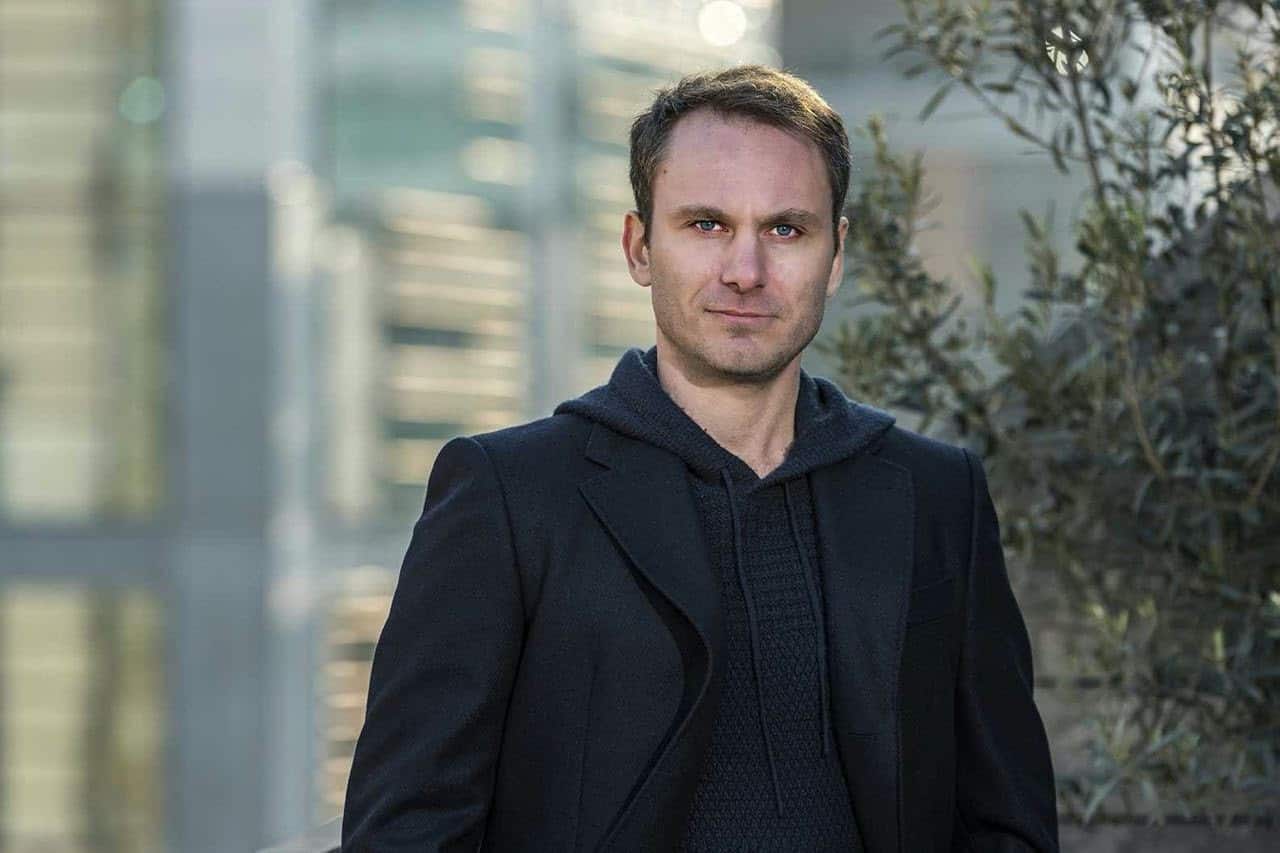Tether Has No Plans to Go Public: CTO Paolo Ardoino (Exclusive Interview)
The leading stablecoin by market capitalization — backed by reserves of cash and money market cash equivalents — USDT has a market cap of approximately $83 billion at the time of this writing.
Paolo Ardoino is the chief technology officer (CTO) for Bitfinex and its stablecoin, Tether (USDT). Paolo is a well-known full-stack programmer with deep experience in the financial sector (FIX protocol, Bloomberg API), he describes himself as an innovative computer scientist and creative geek. He’s been with Bitfinx for nearly eight years.
He’s also a gregarious and vocal proponent of the stablecoin project online, not shying away from fielding questions and criticisms on Twitter.
During the Paris Blockchain Week conference this April, CryptoPotato met up with Ardoino and discussed the future of stablecoins, as well as developments with USDT, its parent company Tether, and the cryptocurrency exchange Bitfinex.

Turkey, Venezuela, Dubai, and Brazil: Someone Will Accept USDT
Ardoino revealed that they plan to keep doing what they do and provide an “instrument for the people.” The CTO said that they don’t plan on targeting DeFi or banks, or even institutions:
“Our success comes from the usage of people. You go in Turkey, you go in Venezuela, you go in Argentina, Brazil, Latin America, India – everywhere you go, even in Dubai, you will find someone that will exchange or will accept USDT.”
He mentioned this by way of proof that Tether is a useful product. It didn’t need any marketing to achieve adoption by the cryptocurrency industry and its client users. The company doesn’t plan on making any big changes in reaction to the new roster of stablecoin competitors in the space.
“With Tether, what we plan to do is to keep doing what we are doing. That is, really being an instrument for the people. We are not really involved in DeFi. You can see that DeFi is really for other stablecoins. We are not really trying to target banks. We are not really trying to target Wall Street.”
Tether (USDT) Doesn’t Eye Wall Street
Pointing to the situation with unbanked people and those with volatile and/or rapidly depreciating national fiat currencies, Ardoino says Tether’s total addressable market is the world’s 2 billion unbanked who cannot trust or cannot afford to use fiat reserve bank accounts in their countries.
He gave Turkey in recent months as a prime example of a Tether use case. He told us it’s not just hypothetical, “(Turkish Lira) lost 50% of its value just in the last six months or something like that – it’s just insane.” Turkish people have been turning to Bitcoin (BTC) and USDT in droves after their recent currency collapse.
Ardoino said this mission focus, rather than chasing quarterly profits for Wall Street, is why Bitfinix and Tether will not have an IPO:
“I’m proud that Tether is not planning to go public. We want to keep doing what we are doing and keep helping our audience, that is people that are less fortunate. And that is what, in my opinion, Bitcoin teaches us.”
It’s All Fun and Games Below $10 Billion
But even with 50% more than its second-largest stablecoin competitor in terms of circulating supply, many new projects are popping up and joining an increasingly competitive stablecoin sector.
He thinks that even though there’s a lot of competition, the real challenge starts once the market cap of the cryptocurrency hits $10 or $15 billion.
“Definitely, there are many new stablecoins on the market. I would say to a person that would start to issue their own stablecoin – it’s all fun and games until you get to just below $10 billion, $15 billion. But then – it gets tougher and tougher. So what’s really important is liquidity and the stability of the stablecoin.”
He also reiterated that Tether didn’t spend a dime on marketing its stablecoin – USDT. Speaking on the growing interest in algorithmic stablecoins, he said that liquidations could become a big issue.
“…imagine you are an $80 billion stablecoin— backed by crypto— with a downturn possibility of 50% or 60%. When it comes to liquidations, then the stability is really hard. If you have a liquidation of $40 billion, that’s a country sized liquidation. So it’s not that we necessarily like to be backed by traditional assets.”
He also mentioned that it wouldn’t necessarily be a bad thing if Tether becomes the second or the third-largest stablecoin by means of market cap, so long as the industry is moving forward.
The Infamous Bitfinex Hack and How Did Bitfinex Recover
During the cryptocurrency bull market of 2017, there were many crypto exchanges that don’t exist today. Bitfinex is one that managed to stand the test of time, despite being the victim of one of the biggest hacks in the industry. Here’s a bit about the secret sauce to Bitfinex’s staying power:
“We have been really transparent, although some people said otherwise. But when we got hacked, we got on board more than 300 shareholders.
The story of our recovery is really beautiful, I believe. After we got hacked, it took seven days for me to get back the platform. I had to install old servers in a new environment. While I was doing that, the team came up with a recovery plan. And if you think about it, that recovery plan was the first actual innovation.”
It’s worth mentioning that this is exactly when Paolo Ardoino became the CTO of Bitfinex.
The crypto exchange’s approach to this first major test of its mettle was not the easy way out that a financial sector business would think of first to take. It underscores the software development ethos that makes the cryptocurrency industry so potent.
“Usually, companies that are in distress would take loans from traditional finance— use financial services in order to try to recover and get back on their feet. We took another approach. We asked help from our users, telling clearly what happened. And then, we had made them aware, in a really confident way, that if they were going to trust us again, we would not betray that trust again. And we would grow Bitfinex back to one of the top exchanges in the world.”
Bitfinex went on to issue new tokens to its users to raise money and give them the opportunity to profit from extending liquidity for a bargain to a company in a crisis rather than let the banks get it.
The exchange issued BFX tokens for this purpose and to return money to users who had money stolen from their accounts. Users could run with the tokens by selling them on exchanges, wait for a full dollar-to-dollar redemption, or draw and convert them to equity with Bitfinex.
The first month after issuing BFX in 2016, the exchange had raised $1 million in revenues from its operations and began buying back the tokens.
By 2017 100% of BFX had been redeemed, making good on the exchange’s word. “People realized,” Ardoino said, “These guys are going to make it.”
Arresting Those Responsible: A Relief for all in Bitfinex
Towards the beginning of 2022, however, authorities finally managed to detain the suspected criminals. The story blew out of proportion so much that streaming giant Netflix decided to run a documentary on the Bitfinex heist.
The United States Department of Justice arrested Ilya Lichtenstein (34) and Heather Morgan (31). Recalling the night they were arrested, Ardoino revealed that it was indeed a relief:
“We never lost hope. We knew about the progress, but we didn’t know who the perpetrators were, of course. The night when it came out – I spent the entire time watching videos because I couldn’t really stop. It was… well, it definitely was a relief not just for myself but for the entire team that was back there.”
Physical interview was taken by George Georgiev, EiC.


